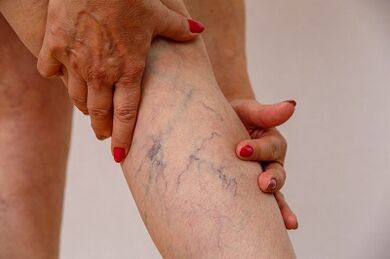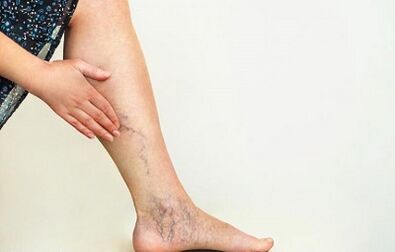
Varicosis vessels are one of the most common pathologies, but everyone does not know if they suffer from this disease.
Thus, a small venous network in the legs, especially for men, but also not noted the middle-aged and older women who are close to their appearance.
However, the appearance of the venous network in the legs is the first stage of varicose veins, which makes the second and third second and third, as the result of the widened and swollen veins in the venous network, and then replaced with swollen veins, and then in the formation of junctions.It should be noted that one of the manifestations of varicose veins creates a lot of concern, known as hemorrhoids and cause many anxiety, anemia and other complications.
There are many reasons for the formation of varicose veins and the varicose veins should begin treatment, regardless of the form of the appearance of the veins, regardless of the form of illness, and the previous date should begin treatment.In this case, the main direction of treatment is the use of venotonic, which also applies to the vulgaros of the subtramples and hemorrhoids.
Vicotic drugs
Often, made from different herbs or fruit seeds, affect the wall of venous veins, causing a contraction and prevent bloodshed, prevent stagnation in the veins.Therefore, it is possible to eliminate the existing varicose veins and prevent the progression of the disease.
Local preparations are also of great importance.Moreover, for hemorrhoids, varicose veinets of low extremities are very high effectiveness for ointments, which are both vascular stabilizes, but also a blood downloaded effect.This is possible to eliminate the symptoms of the disease and the weight of the disease and symptoms of the weight and feet in the legs, and the legs and legs containing the lenses are possible to eliminate symptoms such as vascal vessels.
The late treatment is not only the progress of symptoms, but also the possible consequences of life-threatening complications.

Thus, one of the most dangerous complications is the development of lung embolism.Thus, blood stagnation in the veins of the lower extremities causes blood clots that can be tightened to the wall of the vein or non-relevant blood clots.Therefore, in a stage or in the other, a spot can be opened and can be transported with blood and then enter the lung vessels.The suspension of blood flow from lung arteries due to the blood clot entering them leads to the necrosis and hemorrhage of the lung tissue.If the blood clot is large and blocks itself in the lung artery, a sudden death can happen.
In this regard, it is not necessary to think that the vulgarity of lung emolicism is the most dangerous complication of the vascular vascular, because it is noted above, the disease can be difficult with bleeding and subsequent anemia.
In the early stages, varicose veins do not only bring aesthetically anxiety, but also significantly reduces physical activity tolerance.Thus, a person begins to feel weights in the legs shortly after standing or walking position.In addition, a clearer load may seem a very serious swelling because the engine mode is even limited.
Thus, the likelihood of varicose veins is caused by disturbing in the very early stages of the veins and progresses only the likelihood of developing and developing significantly.
When you look at this, the treatment of aesthetic defects and the treatment of the disease with the development of thrombosight or thrombozball should begin the treatment of varicose veins in the earliest stages.Moreover, it can be treated very effectively with an integrated approach to the disease.If treatment begins in later stages, it is very important to prevent complications.
Therefore, treatment should not be neglected in the earliest stages, and in the next stages, when developed, developed, it is important to avoid surgical treatment, but also to prevent vital dangerous complications as lung embolism.

















